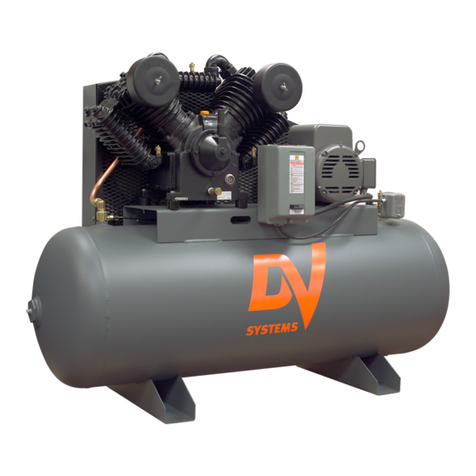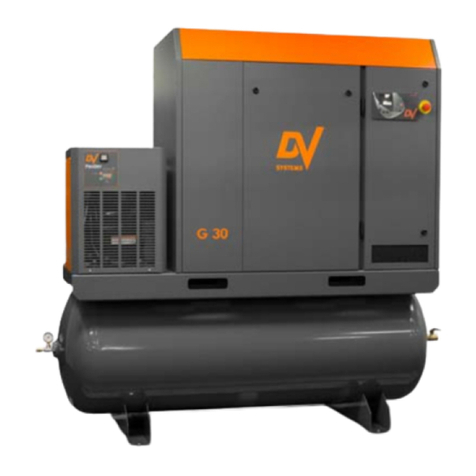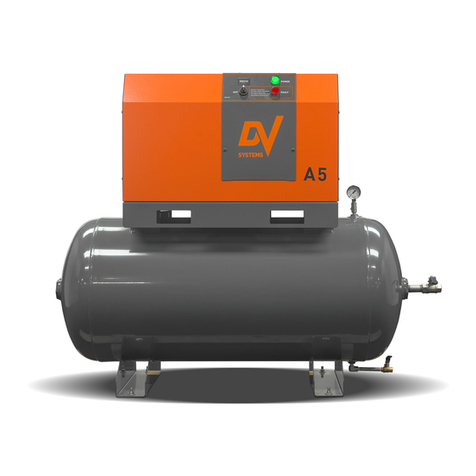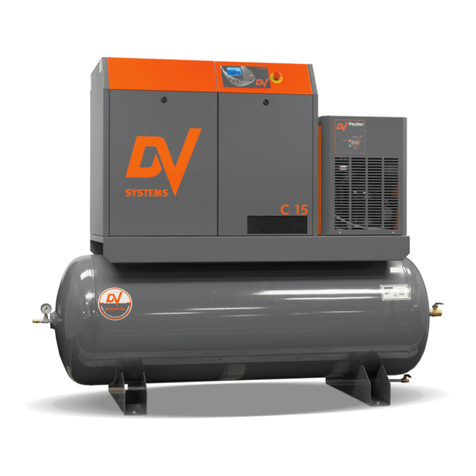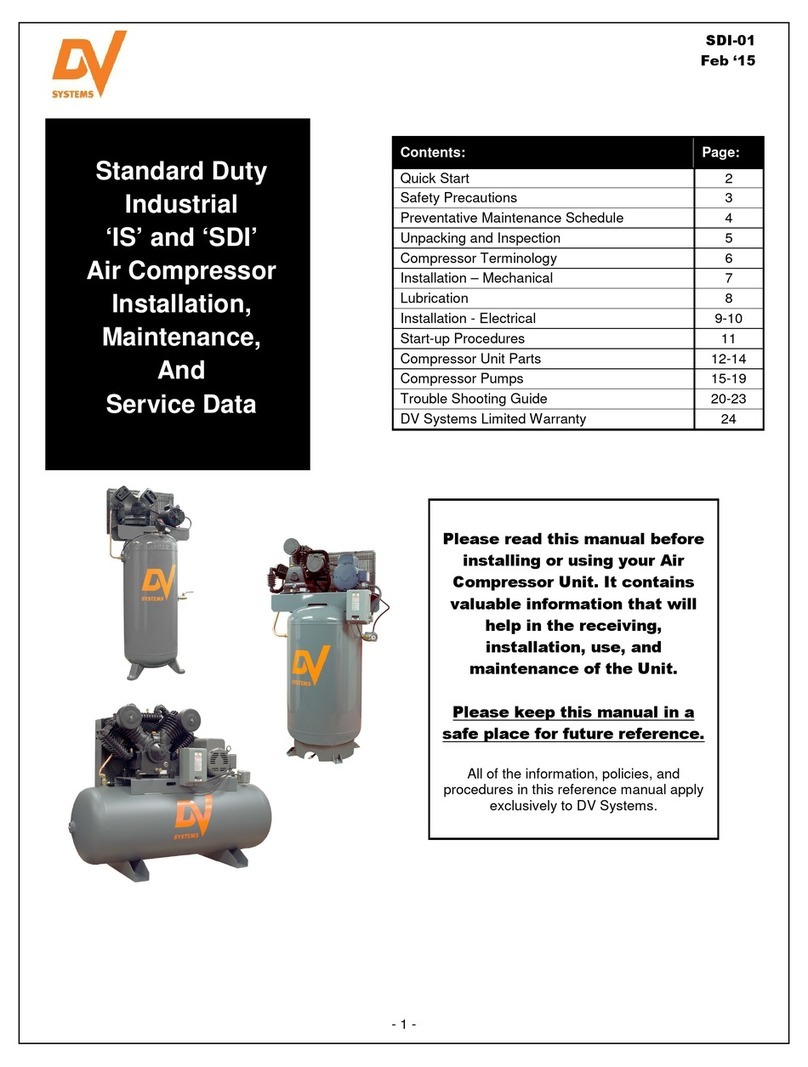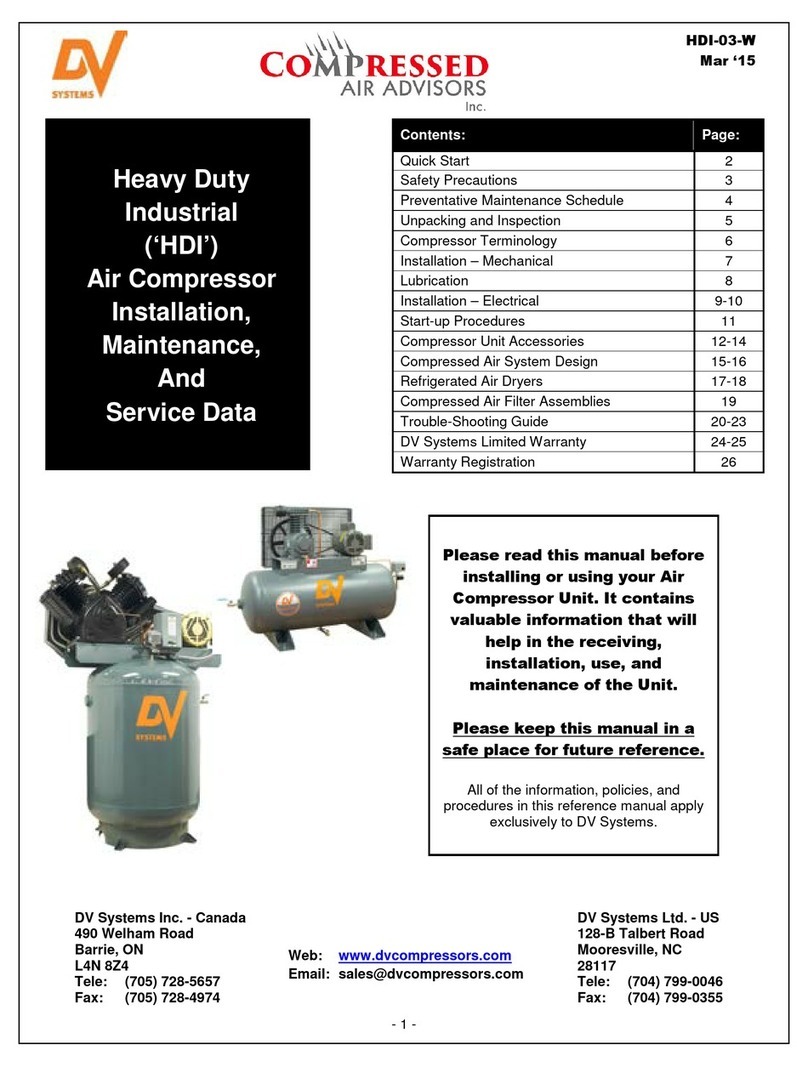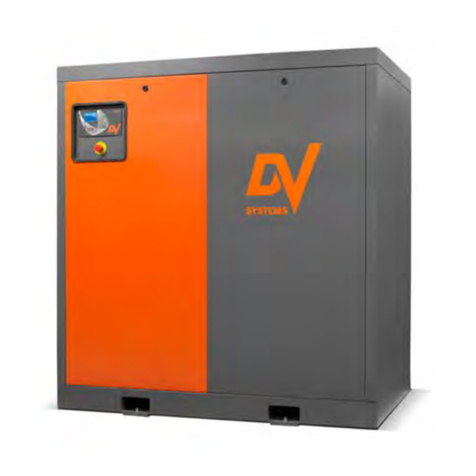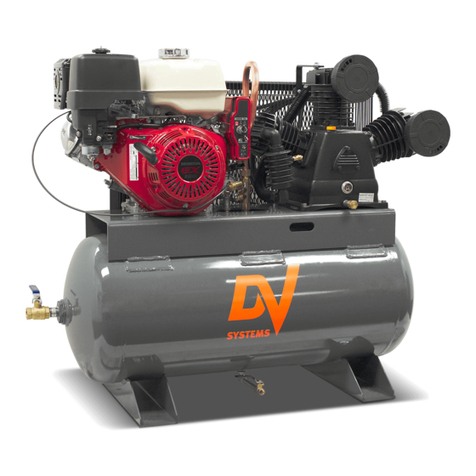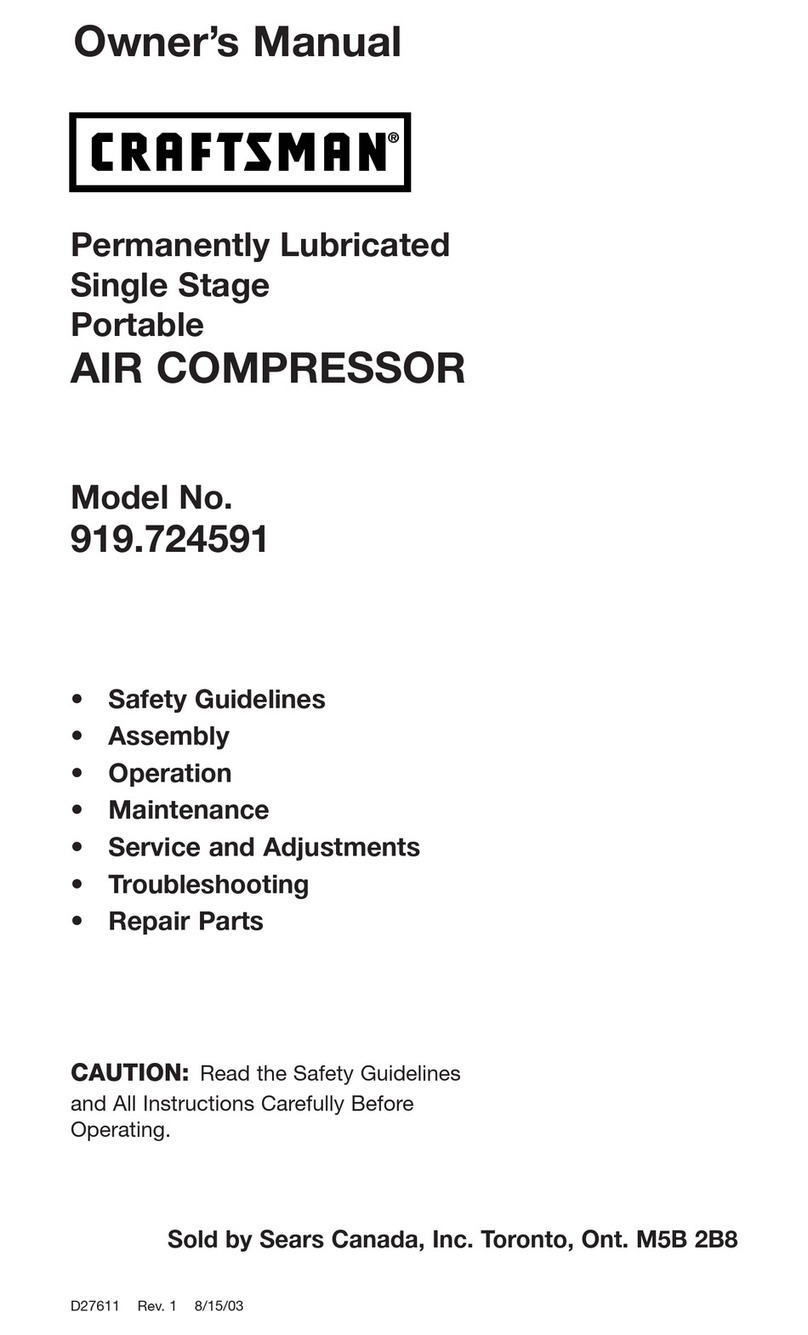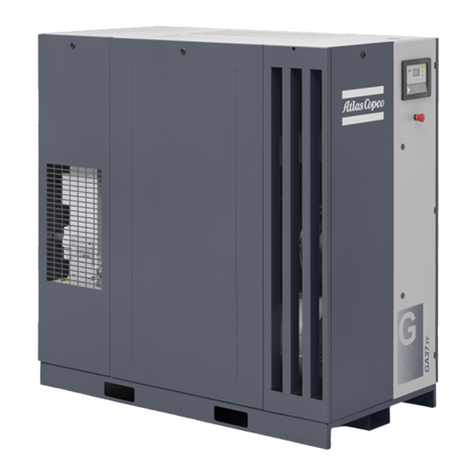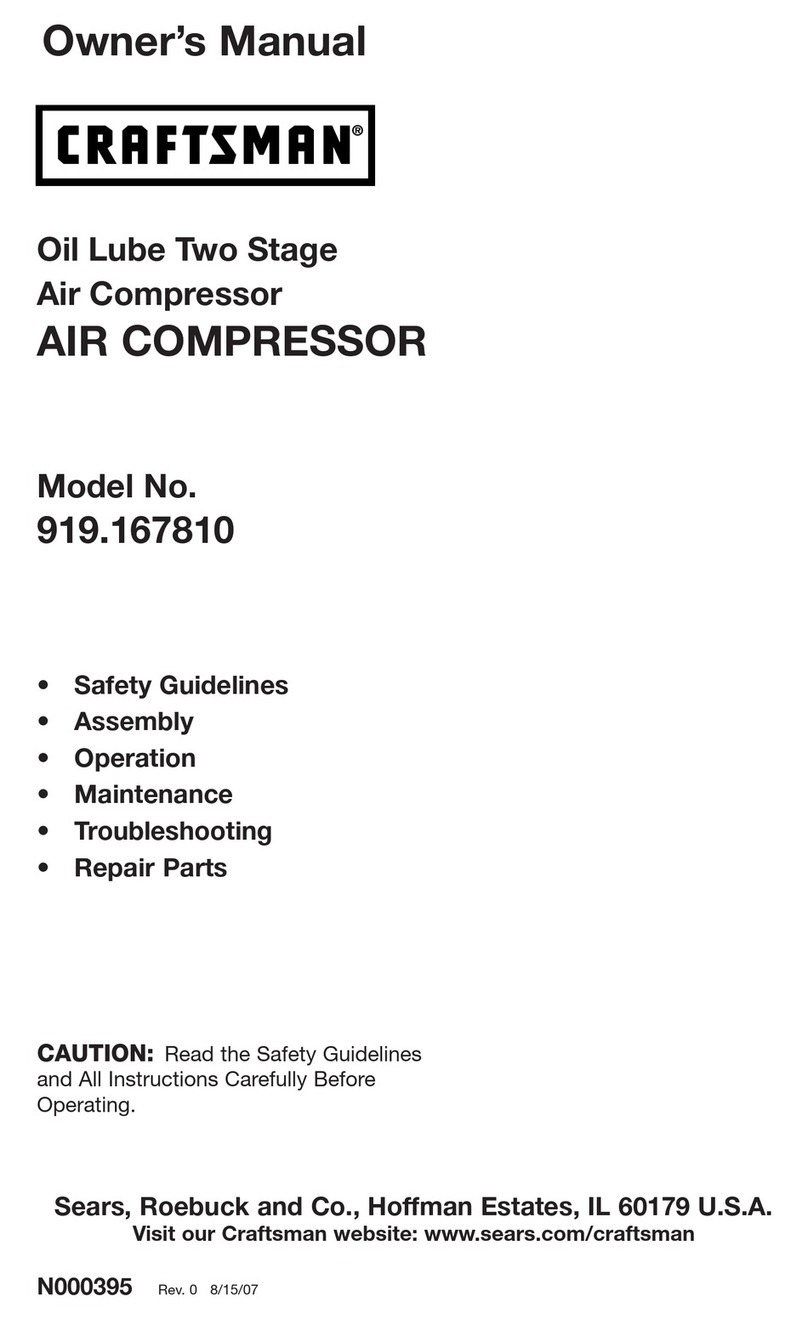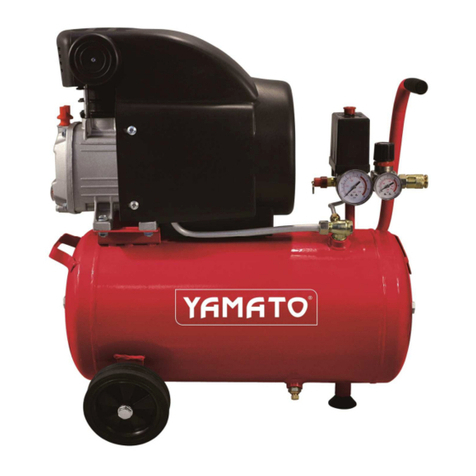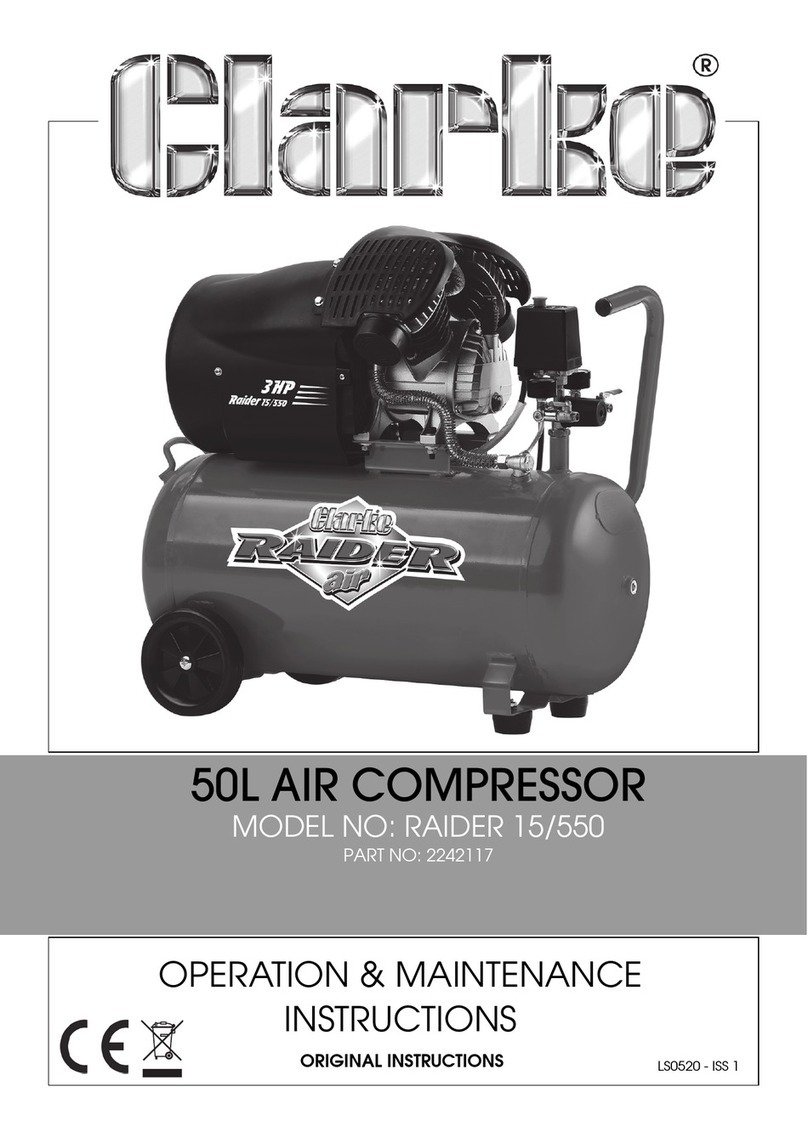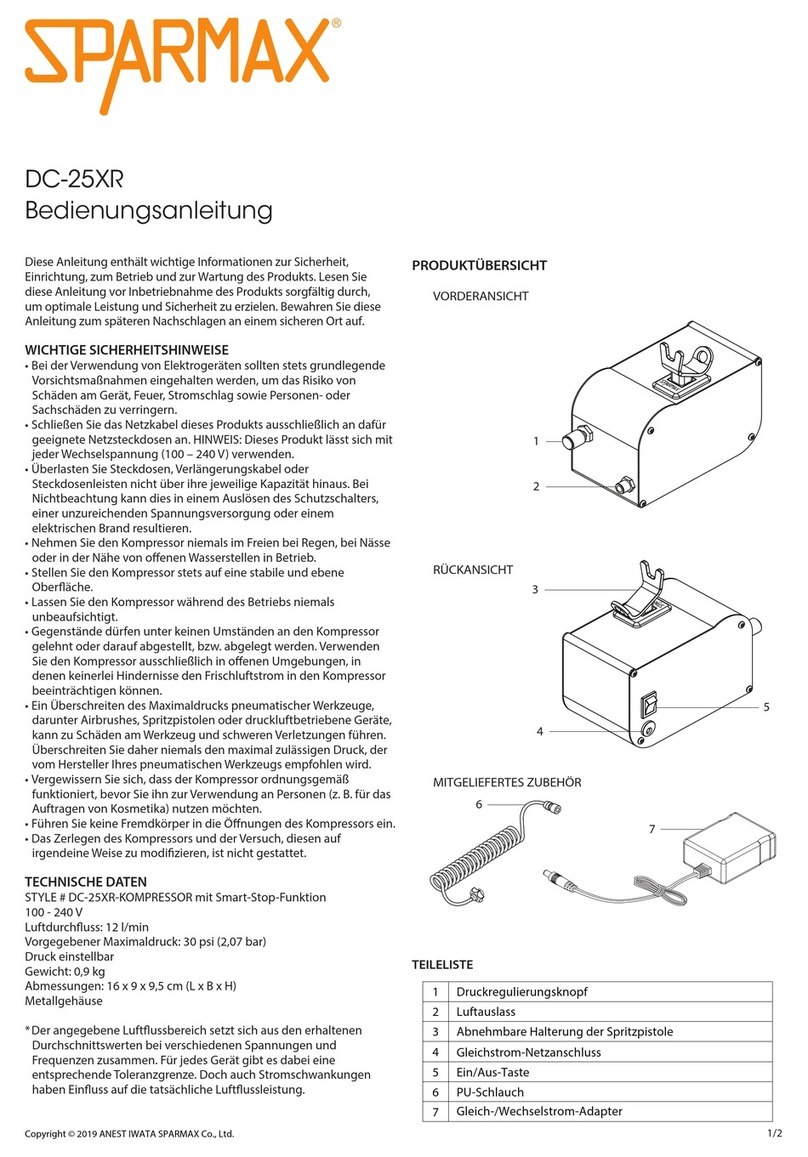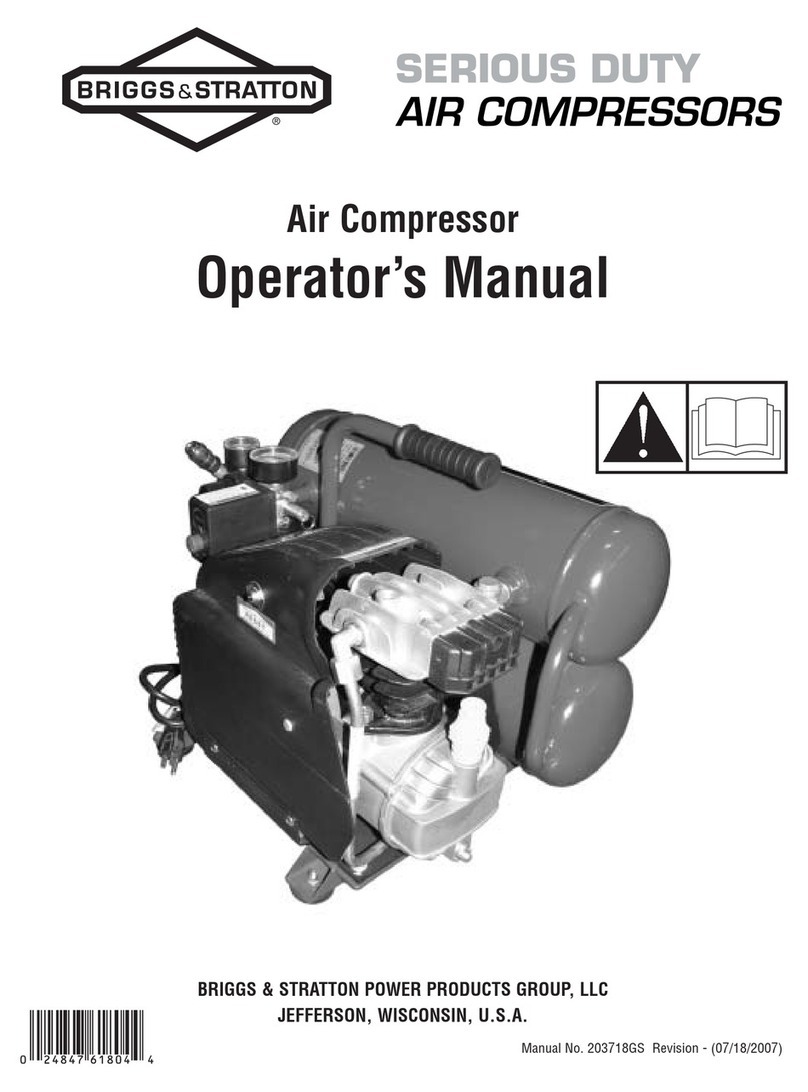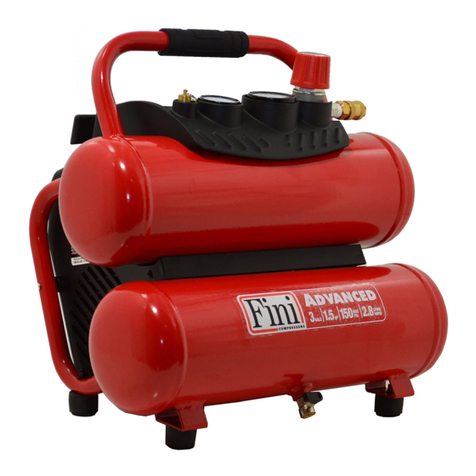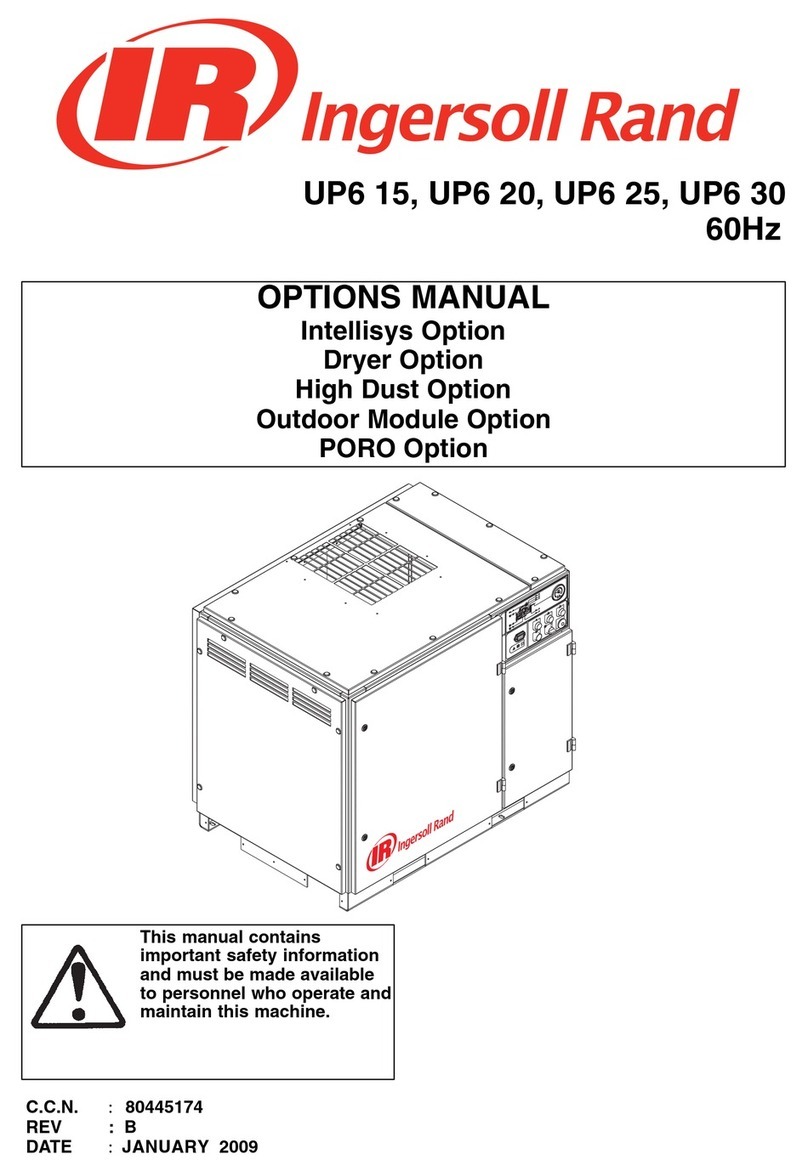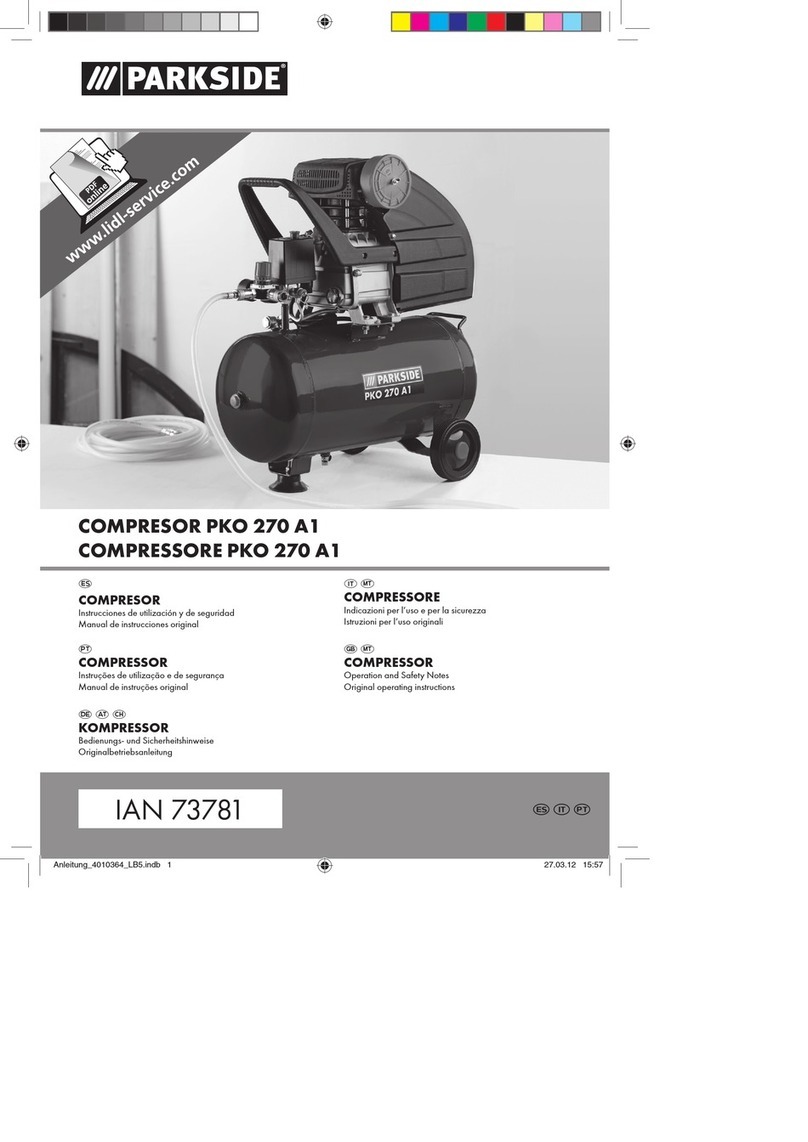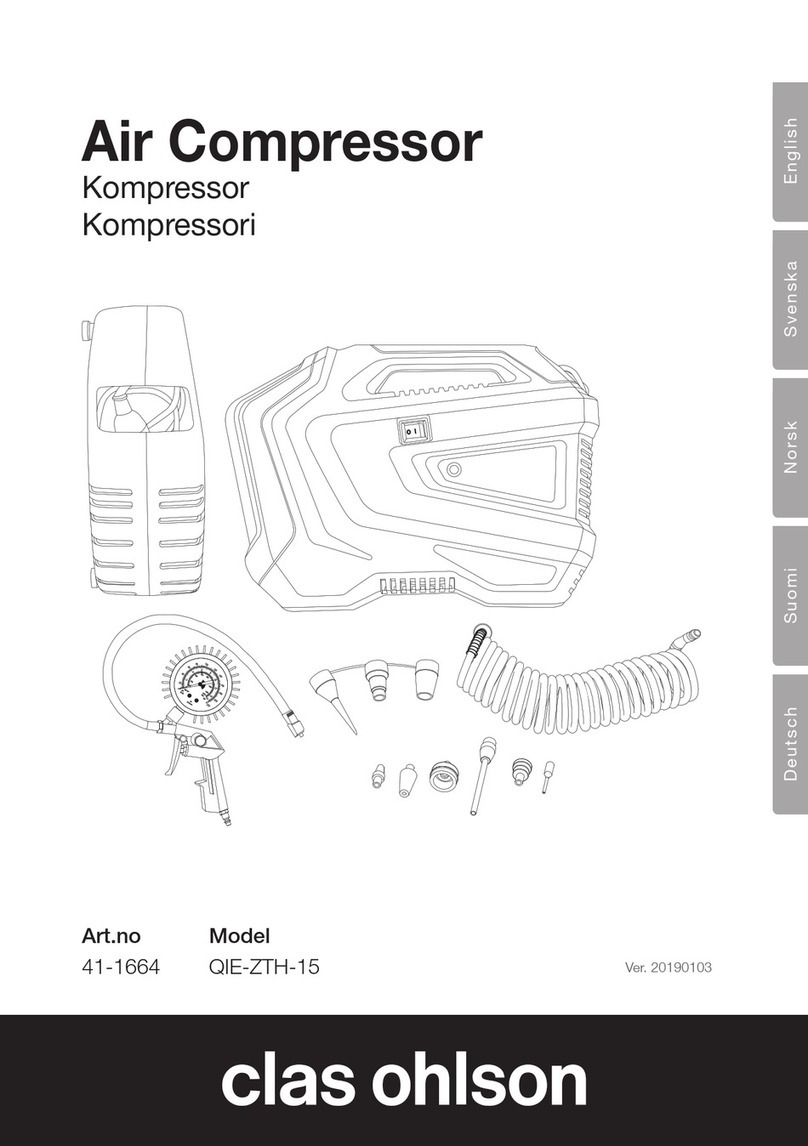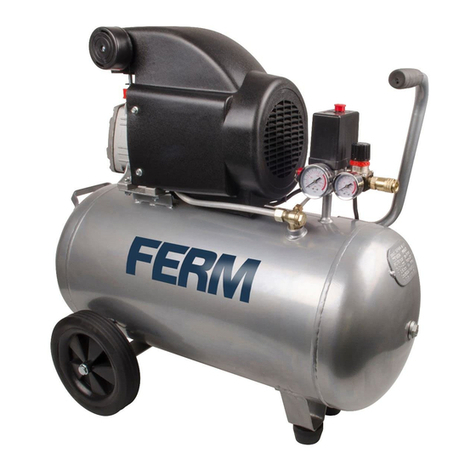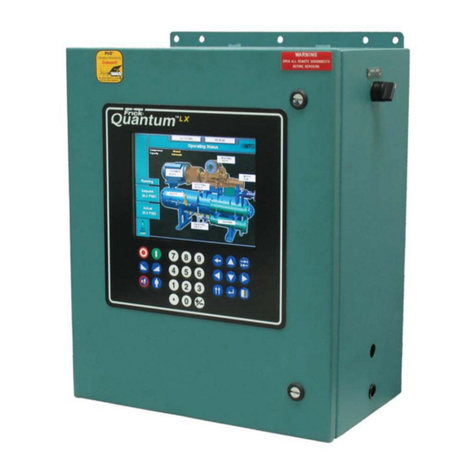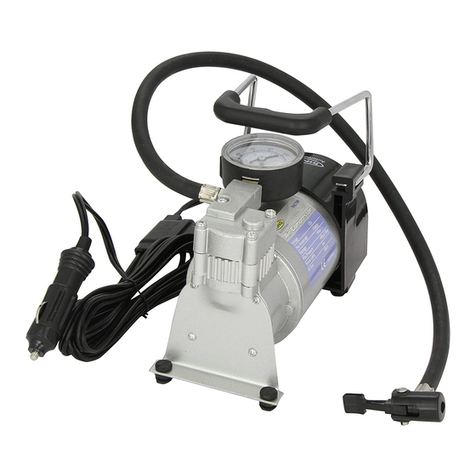
D20, D20VSD, D20TD, D20TDVSD-C
Feb ‘14
- 7 -
The Compressor must not be operated in
a confined area where the heat from the
Unit cannot readily escape.
Installation – Mechanical
When moving the Air
Compressor, the forklift or hand
lift forks go under the Unit from
the directions as indicated.
Please be advised that care
must be taken when moving and
positioning the Units as they are
top heavy.
Items to consider when installing the Unit are as
follows:
The Unit should be located in a dry, clean, cool,
dust free, and well ventilated area. If possible,
the Compressor should be located in a
separate room or area, away from the general
operations of the shop.
Allow a minimum of 18” around and 3 feet above
the Unit for easy access to the various sides,
this being for both the proper ventilation of the
Unit and ease of servicing.
Ensure that the floor under the Unit is smooth,
level and capable of bearing the weight of the
Compressor. The Compressor must sit
squarely on the floor.
If installed in a compressor room, ensure that the
room is adequately ventilated. (One
Horsepower produces approximately 2500
BTU/HR.) See Pages 8 and 9.
The ambient temperature should be between
50°F and 104°F (10°C to 40°C).
If installing the Unit on a mezzanine, ensure that
the structure can safely support the weight of
the Unit. As well, the sound level of the Unit
may increase due to the harmonics created by
the structure; use Vibration Pads to lessen this.
Many common Compressor problems can be
attributed to the location or installation of the Unit.
Make sure the Unit is in a suitable location, and
installed correctly.
